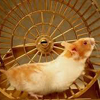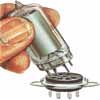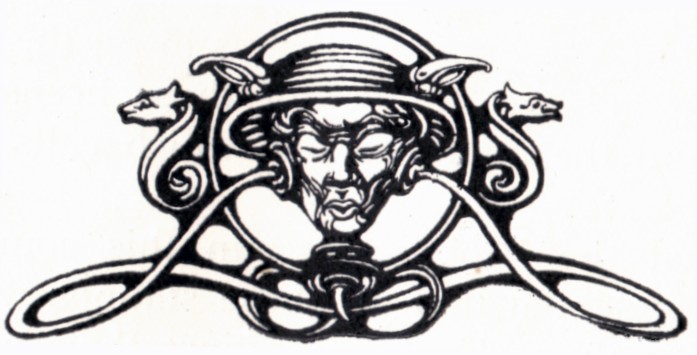|
Digital Radio
|
|
« Back ·
1 ·
Next »
|
|
|

|
Location: Penrith, NSW
Member since 7 April 2012
Member #: 1128
Postcount: 403
|
Just a few words regarding “Digital Radio”.
Digital Radio is not having the uptake for which its promoters had hoped.
My experience with it have led me to totally abandon it due to several shortcomings.
1. The effective coverage area is very small, and even seven stories up and ten km from the city, reception is in the hands of the Gods.
2. The cost of the radios is excessive.
3. Where as my pre-1975 AM radios will happily work from three D size cells for a period of in excess of one year, my microprocessor controlled and signal processed digital radio will suck the living daylights out of its six Ni-Mh batteries in about one hour, unless I have it plugged into the A.C. charger whilst in use.
4. The current consumption ( in the case of the above mentioned radio) makes it useless as a portable radio (Its intended purpose). Its current consumption is quoted as 900 mA.
5. The time lag between the AM transmissions and the Digital transmissions is in the order of
ten seconds.
The one word that you will never hear in the ravings promoting digital radio is the word
Stereo. In fact, how many digital radios have you seen with two speakers?
Research by me on the internet has revealed that stereo is catered for in the system, at low data rates. This I believe is for dual language transmissions.
I did see one digital radio advertised using the word stereo, which made me prick up my ears, and investigation of the ad revealed that it was Bluetooth enabled, and one could stream a stereo source to it which it would play back. Faux stereo radio?
I would like to hear of the experiences of others.
Wayne.
‾‾‾‾‾‾‾‾‾‾‾‾‾‾‾‾‾‾‾‾‾‾‾‾‾‾‾‾‾‾‾‾‾‾‾‾‾‾‾‾‾‾‾‾‾‾‾‾‾‾‾‾‾‾‾‾‾‾‾‾‾‾‾‾‾‾‾‾
I love the smell of ozone in the morning.
|
|
|
|
|

|
Location: Melbourne, VIC
Member since 20 September 2011
Member #: 1009
Postcount: 1253
|
Digital radio does have its advantages.
Where I work is surrounded by all kinds of electrical crud that renders useless any AM reception. In this case we at work have no other choice but to listen to a digital radio which is immune to all the interference.
I recently bought a Cord digital radio tuner for use at home. It has a RCA line out which feeds in to my stereo pre-amp which in turn feeds in to my valve stereo power amp. This digital tuner is also Bluetooth enabled which can be paired to my phone or laptop. This is great for listening to iTunes or Youtube music clips on my stereo set up
I do still prefer listening to AM analogue though.
|
|
|
|
|

|
Location: Wangaratta, VIC
Member since 21 February 2009
Member #: 438
Postcount: 5606
|
This goes back to a comment I made elsewhere on this forum this week. Digital transmission of anything seems to be like the Medieval signal fires on a hill. In order for it to be effective you need a transmitter / receiver on every hill.
Marc
|
|
|
|
|

|
Administrator
Location: Naremburn, NSW
Member since 15 November 2005
Member #: 1
Postcount: 7564
|
One thing to note is that digital transmitters are not as powerful as the analogue ones they replace. I am not sure what the output of digital radio transmitters are but with television in Sydney the power output has halved from 100kW for analogue to 50kW for digital. This probably isn't a problem for television as the receivers are mostly in one static location at all times but for radio, where the listener is often in their car, a receiver won't always be line of sight to the signal source. I am yet to test whether digital signals can be picked up in any of Sydney's motorway tunnels. Not many cars are yet fitted with digital radios but those who own cars that are would rightly expect the transmissions to be repeated in these tunnels, as mobile phone and analogue radio broadcasts already are - there's five now (Sydney Harbour, M1 Eastern Distributor, M5 East, Lane Cove and Cross City) with another three to be constructed before the end of the decade (M5 East duplication, M4 East and M1-M2 link).
The less power that is radiated from transmitter sites, the more the receivers will need to rely on external antennas and line of sight to the transmitters. Marc is right - long gone will be the days when a flea-power radio can bring in the world.
‾‾‾‾‾‾‾‾‾‾‾‾‾‾‾‾‾‾‾‾‾‾‾‾‾‾‾‾‾‾‾‾‾‾‾‾‾‾‾‾‾‾‾‾‾‾‾‾‾‾‾‾‾‾‾‾‾‾‾‾‾‾‾‾‾‾‾‾
A valve a day keeps the transistor away...
|
|
|
|
|

|
Location: Oradell, US
Member since 2 April 2010
Member #: 643
Postcount: 835
|
In the USA we have "In Band On Channel" IBOC digital radio, and few people have bought into them. Reception problems can make the received signal switch from digital to analogue and back, making for a rather choppy listening experience. On AM you get sidebands of hash. FM it's more subtle. It might make trying to listen to a distant adjacent station a little more difficult.
|
|
|
|
|

|
Location: Somewhere, USA
Member since 22 October 2013
Member #: 1437
Postcount: 896
|
Satellite digital radio has been great for a decade and probably where it should stay.
They would probably have had a shot marketing that for domestic.
It could be done on the cheap now a base bound satellite station is reliable within the c3 footprint.
Strangely, Foxtel has been giving away ABC TV and radio channels for quite some time now.
All ABC can be received on the Foxtel service without any access controlled decoder.
|
|
|
|
|

|
Location: Hill Top, NSW
Member since 18 September 2015
Member #: 1801
Postcount: 2215
|
I've had digital radio receivers for a while now, although I don't use them that often.
The first one is actually a TV digital set-top box that happens to have Digital radio and normal FM reception built-in. The TV set does the job of the display panel. In my location I have line-of-site of the TV transmitters even though I am way out in the south-western suburbs. My TV aerial is just a normal rabbit-ears type, and digital TV reception is perfect. There are currently 53 digital radio stations in Sydney. The audio output is connected to a stereo amp, and I can confirm 2CH (for example) is transmitting proper stereo.
My other receiver is an Akai that I purchased from BigW for $38 (you've probably seen them in the stores). I run it from the supplied power pack. It only has 100mw of audio, so sometimes I connect the headphone output to an amplifier so that's it's loud enough to be heard. Sometimes I travel down to near Mittagong, and reception is extremely poor. By connecting the house TV antenna to the receiver's telescopic aerial, reception is much improved. Last May I took a holiday to Bribie Island (north of Brisbane), to visit my mother. She wanted to buy a digital radio but had been told by everyone that reception was no good. I took the little Akai with me and discovered that in fact reception was fine.
Do your own testing, and since the frequencies are on about the old TV channel 9, you can use your external TV antenna.
|
|
|
|
|

|
Administrator
Location: Naremburn, NSW
Member since 15 November 2005
Member #: 1
Postcount: 7564
|
Don't forget there is an article here on digital versus analogue and is a pretty good comparison of new versus old too. I got one of the conversions from dollars to pounds wrong but I was only out by five bob.
‾‾‾‾‾‾‾‾‾‾‾‾‾‾‾‾‾‾‾‾‾‾‾‾‾‾‾‾‾‾‾‾‾‾‾‾‾‾‾‾‾‾‾‾‾‾‾‾‾‾‾‾‾‾‾‾‾‾‾‾‾‾‾‾‾‾‾‾
A valve a day keeps the transistor away...
|
|
|
|
|

|
Location: Canberra, ACT
Member since 24 April 2012
Member #: 1136
Postcount: 170
|
My experiences with digital radio are somewhat similar to those of 'Labrat'.
When DAB+ became available in Canberra I was initially interested to try it however I was discouraged by the limited choice of stations as well as the high cost for any receiver that I would consider as having a case and speaker large enough to produce decent quality sound. (Being of a 'certain age' I mainly listen to ABC Radio National and ABC-FM plus specific programmes on two community stations.) Another factor was that although my house is less that 10Km from the combined TV and FM antennas for all stations, it is on the far side of a large hill so there is no line of site to the transmitter tower. This hill effectively screens the house so that an external antenna is necessary for acceptable TV reception. FM reception is variable on all six different receivers I use from time to time and all of these use either a telescopic antenna or a short wire antenna. ABC-FM on 102.3MHz is usually acceptable but still prone to fading/interference due to multi-path refection. Reception of the two low power community stations, on 92.7MHz and 98.3MHz respectively, is very hit and miss requiring much fiddling with the antenna. Annoyingly Triple J on 101.5MHz booms in at all times and will cause 'splatter' over these stations when their signal fades and even reception of ABC-FM is overridden at times. This happens on even some of my better receivers so it is not necessarily due to poor selectivity/discrimination in the RF stage. Since the 'switch-off' of analogue TV it seems that the signal strength of ABC-FM has dropped making antenna 'tweaking' more difficult and with a noticeable increase of background hiss on my lesser receivers. (Brad's comment about the halving of TV transmitter power makes me wonder if FM transmitter power have also been reduced.) Recently I have also noticed a beat note in the background of all stations (except bloody Triple J) which I suspect is due to interference from a new Telstra 4G mobile phone tower. I listen to ABC Radio National on AM from a transmitter that is located about 7Km away on my side of the hill so reception is very good.
A couple of months ago I noticed that Officeworks was selling a Bush BR25 DAB+/FM radio for less than $50 and that the case was large enough to fit a reasonable speaker. The radio was marked as tuning 174 - 240MHz for DAB and 87.5 -108MHz for FM. It is an AC/DC unit operating on four AA batteries or an included 5V switch-mode power supply. I bought the radio but found that it has limitations. When operating on DAB+ it is necessary to fully extend the telescopic antenna and reception is still subject to multi-path reflection problems. With a strong signal the unit performs very well but if I move any large metal item such as lowering a external window shutter or even opening the refrigerator door, the error rate goes up and the sound drops out. Reception on FM was actually better than any of my other AM/FM radios for ABC-FM but the weaker community stations was still subject to interference.
Like 'Labrat' found with his digital radio, it is not feasible to run this radio on batteries. When used for only about two hours on DAB+ and then switched off over night, a set of alkaline batteries were flat by the next morning. A replacement set of fully charged Ni-Mh cells lasted less than 24 hours with the radio used for just an hour and then switched off. Obviously the unit draws a high current even when supposedly 'powered down' unlike my old AM radios where the on/off switch really disconnected the battery. (The old National Panasonic 'All Transistor' AM radio that I use in the bathroom of a morning is good for at least six months on two AA cells. I saved up all my pocket money to buy it in 1965!)
However last week I bought a Sony CMTSBT300WB stereo system ($397 from the local Good Guys store) having read a favourable review. This unit replaced a similar but aging Teac 'bookshelf' system. I wanted a unit that could play MP3 and other digital music files in addition to CDs (my preferred music format). The unit can also make Bluetooth connections and stream audio via a WiFi router (which I may try later). The review mentioned that this unit also had an FM and DAB+ tuner which I discounted due to my previous experiences of poor reception. When setting up the Sony I fitted the four foot long wire antenna that was supplied with it. When I switched it on for the first time I was delighted with the quality of the sound from both CDs and USB sticks. (Sony claims this unit has circuitry that expands the compression format used in MP3 and other digital files. I have no proof of this other than I have never heard an MP3 sound so good before.) What surprised me was the excellent reception on FM (no Triple J hash) and amazingly DAB+. It could get digital stations that the Bush unit could not read and all of them in stereo. Given Wayne's comment about 'faux stereo' I made an empirical test to determine if it was the 'real thing'. I noticed that on most digital stations the stereo indicator came up but not on all ABC transmissions. ABC Grandstand (sports) did not indicate as stereo and listening via headphones confirmed it was mono only. ABC Jazz indicated as stereo and listening to various pieces gave a distinct left or right placement of different instruments. If this was simulated stereo then it was very convincing and the overall effect when listening on speakers in my living/'media' room was excellent.
So while DAB+ on the Bush was disappointing, the Sony has made me a convert to digital. However while digital is touted as 'free from interference' (I recall similar claims for FM when it started here in the mid 1970s), as mentioned by Marc it just gives up if the signal strength drops and/or the error rate goes up.
The comments by Wa2ise giving the contrast with the American digital system were interesting and shows what may well happen here if digital replaces AM. As noted by Brad, AM (with its longer wavelength) is still the most effective over distance when listening in a car/automobile.
Andrew
|
|
|
|
|

|
Administrator
Location: Naremburn, NSW
Member since 15 November 2005
Member #: 1
Postcount: 7564
|
Just to update everyone, I finally got a battery for my Pure One, which features in the article I linked to above and it lost the signal when I drove through the Lane Cove Tunnel on Sydney's north shore.
So it looks like only analogue radio and the mobile phone networks are repeated in the tunnels.
‾‾‾‾‾‾‾‾‾‾‾‾‾‾‾‾‾‾‾‾‾‾‾‾‾‾‾‾‾‾‾‾‾‾‾‾‾‾‾‾‾‾‾‾‾‾‾‾‾‾‾‾‾‾‾‾‾‾‾‾‾‾‾‾‾‾‾‾
A valve a day keeps the transistor away...
|
|
|
|
|

|
Location: Canberra, ACT
Member since 23 August 2012
Member #: 1208
Postcount: 587
|
Like Realyautomatic I'm in Canberra but my experience with DAB+ has been nothing but good. Admittedly I have about 5km line of sight to the Black Mountain transmitter tower. Several years back I bought a composite receiver from Kogan that receives FM, DAB+ and Internet streamed audio via WiFi.
It's about 40cm wide and has has two built-in speakers on the ends facing outwards. It has always produced stereo, but the speaker placement is obviously pretty limiting for a stereo experience. The best location would be to have it in a corner of a room at 45degrees, to get even deflection from the wall into the room. However I have almost always used it with speakers muted, and feeding through RCA outputs to my 1977 Luxman amp. Quality is far superior to FM.
I'm surprised Relayautomatic attributes fade to multi-path reflection. DAB (originally known as Eureka) is specifically designed for European built-up environments with Orthogonal Frequency Division Multiplex (OFDM) transmission to overcome the multipath issues that plague FM in Europe. Modern cellular phone systems use OFDM for the same reasons. That is one factor in the significant end-to-end latency in the broadcast signal (about 2 seconds when I have AM and DAB receivers on the same station). I would guess that signal degradation problems are probably entirely due to weakening the total signal to the point where there is not enough data in the buffer for OFDM decoding, error-correction and demuxing. Like cellular phones, DAB is designed to work with many low-power transmitters rather than big iron like AM or FM (incidentally that is one reason that the US commercial broadcasters rejected it after their technical panel had recommended it - they all wanted to own and monopolise their own transmitters rather than share a multiplexed common transmission platform). However the commercial interests that run the transmission system in Australia choose to avoid the costs and difficulties in securing multiple transmission sites, so receivers on the fringe of signal strength, whether because of distance or local obstruction, will not perform properly.
OFDM DAB should also work in moving vehicles, giving seamless hand-off between transmitters, as with cellular phones. Of course, this only works if there are enough transmitters to provide the overlapping coverage. The radio broadcasters don't want to pay for it, and the telcos get more money from telephony (including data streaming) than they would get from hosting DAB broadcast transmissions from their networks of sites. I think the ABC does offer this to some extent, but I haven't trialled it while travelling.
Maven
|
|
|
|
« Back ·
1 ·
Next »
|
|
You need to be a member to post comments on this forum.
|


